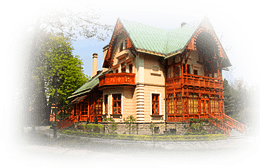The ancient Greeks began to define grape varieties and growing techniques in the scientific manner, and established a holiday in honor of the god of wine, Dionysos. It is supposed that Greek wines were very sweet and strong. Salt water was added to them to obtain acidity or honey to enhance sweetness. For the Greeks wine was above all a part of culture. No one but the ancient Romans realized that this tipple can be a lucrative commodity to commercial interchange. They began describe wines and their quality values, and also introduced the term of microzone, a small area with a unique climate, giving quality wines. The Romans produced wines in the central and south part of the Empire. They added to them fruits and spices - conditum, making strong and flavored wines. Following the collapse of the Roman Empire and development of Christianity wine was considered a sacred tipple and monasteries transformed into vine growing and winemaking centers. In the Middle Ages wine drinking became a source of pleasure. Benedictine monks created a real school of winemaking methods. In the 17 and 18 centuries in France started production of quality wines on a large scale. In the region of Champagne the monk named Dom Perignon discovered the method of wine fermentation in bottle, which became the basis for Champagne production. The French way of winemaking business dominated throughout the world than.
The progress of science in the 19 century and discovery of fermentation rules by Ludovic Pasteur in the end contributed to the development of winemaking sector. There arose a real hazard of a vine plague called
phylloxerawhich at the end of the century devastated almost all European grape growing areas. To fight the plague the European cuttings that survived were grafted onto the American rootstocks resistant to phylloxera. This way the wealth of European grape varieties was saved. It is interesting that resistant to it were Nebbiolo and Barbera that up to the present make great wines. Currently France and Italy are the top two leading wine producers, vying for the title depending on the season of the year. While Italian wines are characterized by diversity. m. There is not any other country in the world that can boast of such enological wealth. There is more than 600 indigenous grape varieties, native to a given region and sometimes even to a zone or a town. These are some examples of the regions and names of autochthonous grape varieties:
Piemont - Nebbiolo (wines called Barolo i Barbaresco), Barbera, Dolcetto, Grignolino, Freisa, Brachetto, Pelaverga, Moscato d`Asti, Timorasso, Erbaluce di Caluso
Toskania - Sangiovese and its clones (wines called Chianti, Brunello di Montalcino, Vino Nobile di Montepulciano), Vernaccia di San Gimignano
Veneto - Glera ( wine called Prosecco), Garganega (wine called Soave), Lugana
Friuli - Tocai Friulano, Picolit
Trentino Alto Adige - Schiava Gentile, Lagrain, Gewürztraminer, Marzemino, Teroldego Rotaliano
Campagna - Fiano, Greco di Tufo, Aglianico



















